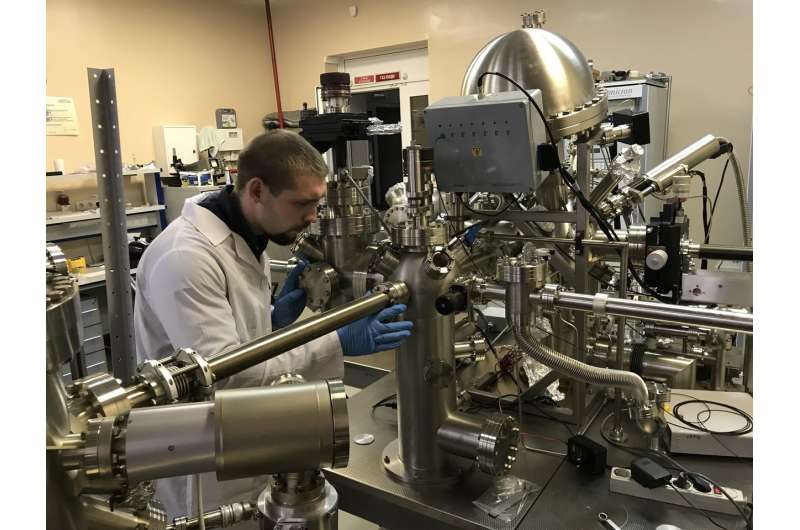Physicists develop concept of new fast non-volatile memory

Using micromagnetic simulation, scientists have found the magnetic parameters and operating modes for the experimental implementation of a fast racetrack memory module that runs on spin current, carrying information via skyrmionium, which can store more data and read it out faster. The results are published in Scientific Reports.
Scientists from the Laboratory for Thin Film Technologies of the School of Natural Sciences of Far Eastern Federal University (FEFU), and South Ural State University (SUSU) have investigated the stability of skyrmionium in a magnetic material and suggested using it to build a new type of racetrack memory (domain-wall memory). Such memory devices have been proposed based on the magnetic configuration of a skyrmion—a topologically stable, vortex-like spin configuration. Skyrmionium has turned out to be more promising for information storage.
Racetrack memory potentially offers more data storage space than modern USB flash drives and HDDs. Also, data read /write speed and storage lifetime would be significantly increased in such devices.
"We carried out a comprehensive study of the nucleation, motion and annihilation processes of skyrmionium under the influence of spin current. This allows us to organize the processes of recording, storing and reading information in magnetic memory. By varying the magnetic parameters of the system and the current density, it is possible to obtain different data reading/writing speeds and bit density. Also, topological features of skyrmionium allow us to significantly increase the data recording density. We investigated the impact of the spin current on the skyrmionium stability in order to determine the technological conditions and modes of operation of our memory. Importantly, in skyrmionium, it became possible to overcome skyrmion-inherent limitations, particularly the Magnus effect, which leads to loss of data in skyrmions." said co-author Alexander Kolesnikov, researcher of Laboratory for Thin Film Technologies, FEFU.
The scientist discussed skyrmionium nucleation based on the principle of nanofabrication, which avoids the laborious process of installing additional nanocontacts in the magnetic module. Thus, the unique production technology of racetrack memory devices, proposed by scientists of FEFU and SUSU, is simpler and cheaper than the technologies of other researchers.
To fabricate the racetrack memory modules, the scientists suggest a sandwich concept. A heavy metal (platinum, ruthenium, tantalum, etc.) is covered with a thin ferromagnetic layer about one nanometer thick, which in turn is covered with another layer of heavy metal to avoid oxidation of the ferromagnet.
Skyrmionium-based memory does not require external sources of energy. The racetrack memory disk will store the data for a long time, even if the computer is not connected to the power supply. Also, the number of write cycles is not limited. That distinguishes the magnetic racetrack memory technology from SSD technology, which is energy-related and has a finite number of rewriting cycles.
Racetrack memory (domain-wall memory) is a type of non-volatile memory working on the principle of magnetic domains, which are stable magnetic states in the nanotracks driven by a spin current. The magnetization in the domain can switch between two positions, for example, up and down. This allows writing binary code by alternating sequences of zero and one.
More information: Alexander G. Kolesnikov et al, Skyrmionium – high velocity without the skyrmion Hall effect, Scientific Reports (2018). DOI: 10.1038/s41598-018-34934-2
Journal information: Scientific Reports
Provided by Far Eastern Federal University




















